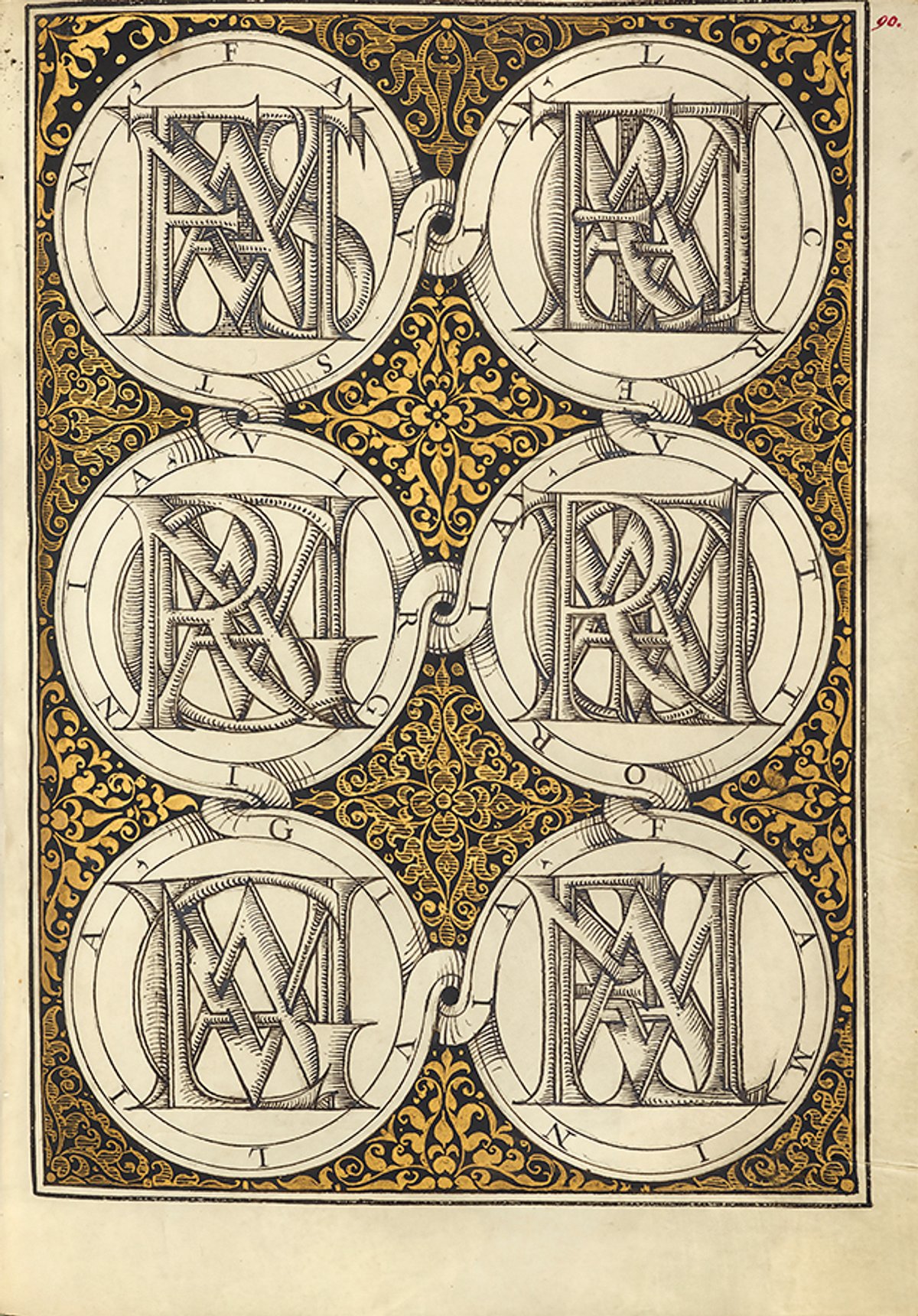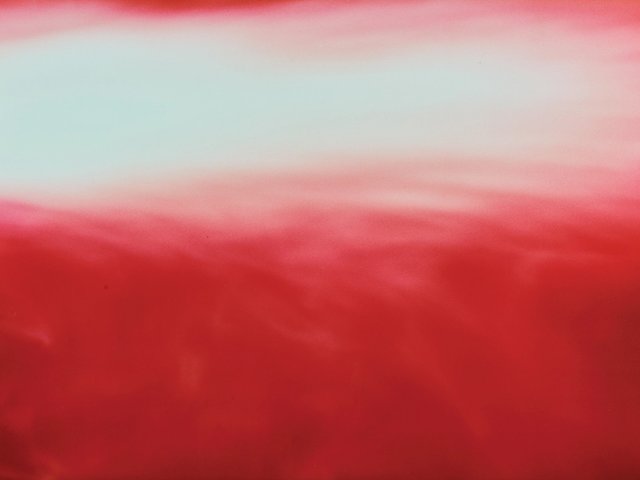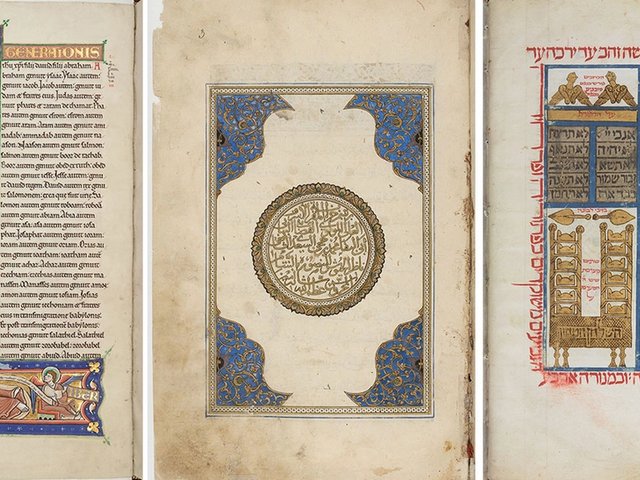Let your eyes sink into the hand-painted extravagance of the Rothschild Pentateuch and, whether you can read it or not, you might feel a sense of awe. The manuscript—crafted by candlelight by two Jewish scribes—boasts more than 1,000 pages, hundreds of which are illuminated with animals and plants in the margins, elaborate Hebrew initials and full-page depictions of objects such as a golden menorah.
Of course, allowing your eye to settle on such a precious, ancient object implies a level of access—700-year-old books tend not to be in range for most people. More importantly, because they are mainly religious, and written in tongues and scripts now unfamiliar, they can seem enveloped in an ever-thickening layer of impenetrability.
A show at the Getty Center in Los Angeles, Symbols and Signs: Decoding Medieval Manuscripts, aims to debunk the notion that they were always thus. “Just as we understand emojis or the abbreviations we’re texting, we wanted to show what the code system for medieval people was,” says Orsolya Mednyánszky, an assistant curator in the Getty’s manuscripts department. “If you were born into that culture, you would get it immediately.”
The exhibition highlights three kinds of code—words, images and schematic codes—with objects from the ninth to 17th centuries, from German psalters to Armenian gospel books. In a Carolingian gospel book, a column of four Greek crosses sports monograms that spell out “Bishop Folcwich ordered Walhram to write (this book)”: irrelevant to the biblical text, but instructive for the reader. The 11th-century Irmengard Codex’s Annunciation scene, meanwhile, depicts the Angel Gabriel against a pastel blue background and the Virgin Mary against lilac: blue symbolising divine power and purple worldly power.
The curators are pairing the medieval manuscripts with photographs from the Getty’s collection that relate to alphabets (Leandro Katz’s Lunar Sentence I, 1978), symbolic attributes (Irving Penn’s Small Trades series, 1950-51) and musical notation (Alfred Stieglitz’s Equivalent series, 1922-34). This creative curatorial approach chimes with the playfulness of the manuscripts themselves, in which initials are inhabited with figures and letters superimposed to spell out names. As Mednyánszky says, it is about “layering knowledge, information, play and fun”.
• Symbols and Signs: Decoding Medieval Manuscripts, Getty Center, Los Angeles, 20 May-10 August




